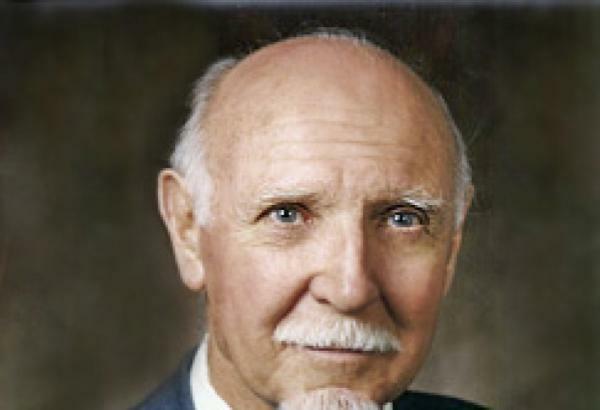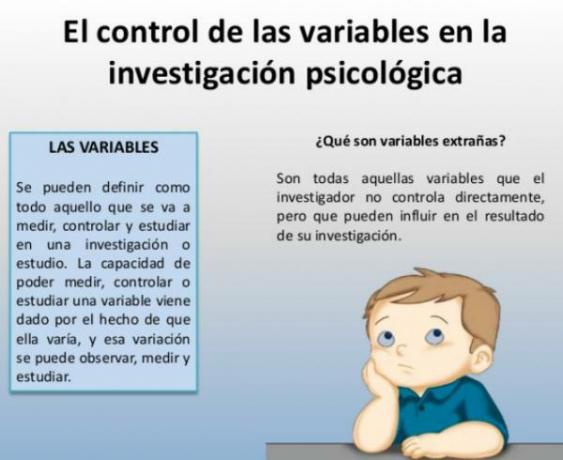
All of Cattell's work has been aimed at discovering the elements that make up the personality, and developing tests to assess these elements or traits. He has also argued that the way to achieve both goals was the use of FA (Cattell factor analysis). In this short article from Psychology-Online, adapted in summary form, you will have the most important conclusions from Cattell's theory.
Index
- Personality: types of traits
- Previous conceptions of Cattell's theory
- Study process
- Economic model
- 16 catell factors: personality test
- Cattell's theory: conclusions
Personality: types of traits.
The three methods of psychology for Cattell.
- Uni or bivariate method: with which relationships are established between the manipulated LV and the RV, which is measured to verify the effects of the manipulation of the LV.
-
Multivariate method: Its purpose is to study the simultaneous relationships between a large number of variables. The researcher does not manipulate the variables, but lets them manifest as they are and uses statistical methods to study the relationships between them. Cattell defends the use of this method because he considers that human behavior is very complex and the interactions of multiple variables come into play. Both methods emphasize scientific rigor.
- Clinical method: which is similar to multivariate, since both seek to understand the whole person and without doing manipulations. However, this method lacks the required scientific rigor as it does not use experimental or statistical procedures.
Personality: That which tells us what a person will do when they are in a certain situation (Cattell). What a person does (R or answer) is a function of the situation (S) and her personality (P). Therefore, R = f (S, P). The basic structural element of the personality is the trait, which implies general reactive tendencies and refers to relatively permanent characteristics.
Kind:
- According to its origin: constitutional features (biologically determined) and environmental features (due to experience, to interaction with the environment).
- According to its content: ability or aptitude traits (resources to solve problems), personality or temperamental traits (peculiar form of behavior of each person or stylistic tendency), and dynamic traits (related to the motivation or cause of the behavior).
- According to its range of application: common traits (applicable to all individuals) and specific traits (exclusive to one person). Cattell's work focuses on the former.
- According to its significance: superficial features (behaviors that appear together at a superficial level but do not really covariate or have a common causal root) and source or deep features (determined by behaviors that covariate, so that they constitute a unitary and independent personality dimension). Cattell studies the seconds, since he considers that they constitute the pillars of the personality, using FA to discover them and to be able to describe the sphere of the personality constituted by these traits.

Previous conceptions of Cattell's theory.
To obtain the fundamental personality traits, Cattell started from the analysis of language, since he considered that the language has words that collect any quality (lexical criterion). But he was against the use of common language terms to name features, as they could lead to confusion by being loaded with value judgments and connotations.
He proposed using letters (A, B.) or Universal Indices (IU) followed by a number, Greek terms, or neologisms in describing these traits. He also argued that data is obtained in multiple ways in psychology, but since none are completely satisfactory, different procedures should be used to balance the negative aspects of some with the positive ones of others.
He distinguishes three types of data:
- Data L (life or life) that refer to real life events that are verifiable (age, educational level, etc.).
- Q data (quiestionnaire or questionnaires) which are data reported by the person, who can lie or deceive himself.
- T data (objective tests or objective tests), those preferred by Cattell, which refer to tests in which the person evaluated is not aware of the relationship between her response and the personality trait that is intended to size.
The Cattell personality structure was based on a study of Allport and Odbert in which they compiled almost 18,000 dictionary terms related to relevant aspects of personality. As he was mainly interested in stable traits, he started from only these and had 4,500 terms left that, through different analyzes, could be grouped into 171 different groups or variables. One hundred adults were evaluated on these variables and the PA revealed the existence of 35 bipolar variables. The bipolar variables were passed to a large sample of adults to be evaluated and the PA yielded 12 factors.
The second phase consisted of seeing if it was possible to find the same factors (found with L data) with Q data. Questionnaires were constructed and administered to large groups, obtaining 16 factors, of which 12 were common to both methods. Then the personality structure was studied from T data and 21 traits were obtained personality fundamentals, which were named using the system of Universal Indices followed by a number.
Study process.
Cattell also uses FA to develop a taxonomy of the motivational sources of behavior. Dynamic traits He divides them into attitudes, feelings, and ergs. The basic unit is the attitude that expresses the strength of interest in following a particular course of action, and feelings and ergs are inferred from the factorial study of attitudes. In order to know the components of attitudes, he elaborated more than fifty objective tests with which he tried to measure different attitudes or motives.
Five component factors of attitudes were obtained:
- Alpha factor or it conscious: it is the conscious search for satisfaction without considering the possible consequences.
- Beta factor or Expression of the I: Conscious and deliberately developed interest.
- Gamma factor or Super-Yo: It alludes to a "I must be interested".
- Delta factor or unconscious It: It includes motivated responses of a physiological nature to stimuli related to interest.
- Epsilon Factor or Unconscious Conflict: It refers to what is repressed and made unconscious due to conflict. These five factors can be reduced to two components, one conscious (I and Super-I) and the other unconscious (It, physiological expressions and repressed complexes).
To determine the different motives or dynamic factors, he produced a wide sample of attitudes and measured them. The AF yielded two factors: ergs factors that reflect innate biological drives, and the feelings or factors determined by the environment, acquired fundamentally through the family and the school. An erg is activated by environmental stimuli and ceases when the goal is achieved.
Feelings are complex attitudes that incorporate minor interests, opinions, and attitudes. These three types of dynamic traits are organized in complex ways in a dynamic lattice, in which certain traits are subsidiary or dependent on others. The feelings depend on the ergs, and the attitudes of the feelings. Attitudes serve to satisfy feelings, which satisfy ergs or biological needs. The dynamic lattice concept has been criticized for its speculative nature.
Economic model.
Econético refers to the study of ecology, of the environment.
Cattell, in addition to developing a taxonomy of situations and environments, assesses the impact of the situation on the individual. Some situations may be relevant to the individual while others may not. Among the relevant ones, some produce more impact than others. What the situation means to the subject also depends on his state of mind.
Cattell expresses the elements that he considers important to predict behavior in the equation of specification (he specifies the way in which traits and situations combine to predict the conduct).
- R = (b1A1 + b2A2 + .bnAn) + (b1B1 + b2A2 + .bnBn) + (b1C1 + b2C2 + .bnCn) + (b1K1 + b2K2 + .bnKn)R is the response that we want to predict and which is determined by a weighted combination of: Source traits of the person (A1, A2.An), states and roles of the person (B1, B2.Bn), the cultural and social meanings of the situation for the person (C1, C2.Cn) and the weighted combination of any other factor that has not been specified (K1, K2.Kn).
The coefficients b1, b2.bn are the weights of each of the factors and indicate the degree to which factor is involved in the behavior of the individual in a concrete situation (if a factor has a weight of 0.9 it is more important in the prediction of behavior than one with 0.5).

16 catell factors: personality test.
One of the most used tests in the assessment of personality is the Cattell 16-Factor Personality Inventory (16PF). The 16PF consists of 187 items or items that are rated on three-point scales. From the scores obtained in each item, the scores of the 16 first-order factors can be calculated, as well as four second-order factor scores.
If you want to know what type of personality you have according to Cattell, do not hesitate to do the following personality test- 16 factors.
Cattell's theory: conclusions.
His proposals have had an influence on clinical diagnosis and on organizational psychology. Without detracting from your proposal, it is possible to make several critics:
- Although there is empirical basis for most of his theory, the economic model has not been tested. Furthermore, although their role is recognized, environmental factors are not included in the prediction of behavior.
- The theory has generated relatively little research, probably due to its technical language.
- The 16 factors are not independent of each other, so they are not totally different.
- Although FA is an objective technique in general, it ultimately depends on certain decisions (extraction technique, for example) made by the researcher.
- The variance that explains each factor (as an isolated factor) decreases as the number of factors increases (the 1st being more important than the 2nd, and so on). This implies that the supposed equality in the importance of the factors has not been empirically tested.
This article is merely informative, in Psychology-Online we do not have the power to make a diagnosis or recommend a treatment. We invite you to go to a psychologist to treat your particular case.
If you want to read more articles similar to Cattell's theory, we recommend that you enter our category of Personality and Differential Psychology.


